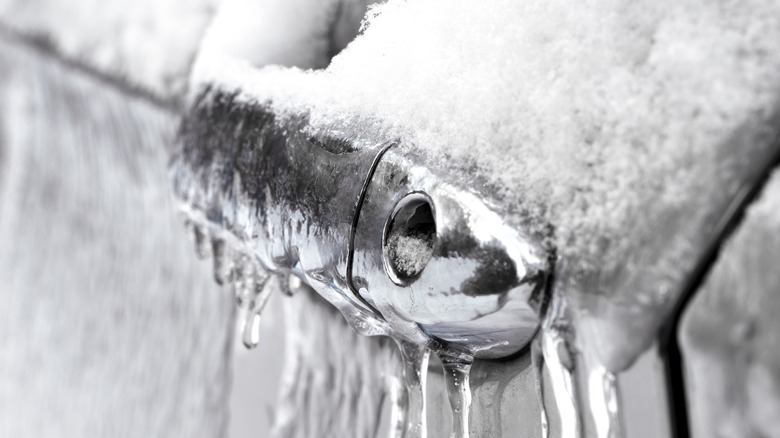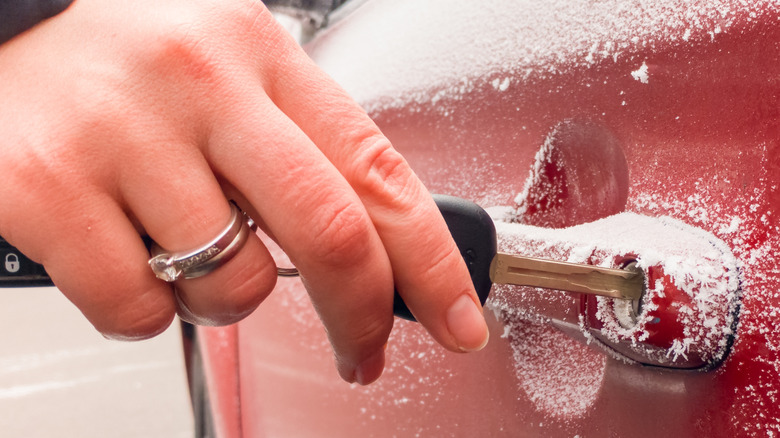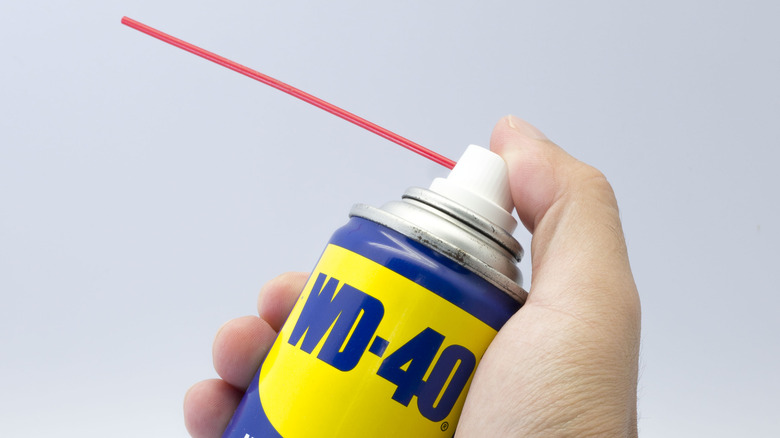This WD-40 Hack Can Keep Your Car's Door Locks From Freezing
As cars become more modern, the overall design has gradually shifted away from a reliance on physical door locks. Everyone locks and unlocks their cars with fobs nowadays, anyway, so the physical lock is a bit of an afterthought.
However, you shouldn't write off your car doors' physical locks entirely, as they could end up being the only way to get you into the car in the event the fob stops working. Just to err on the side of caution, you should make sure that your locks are properly cared for alongside the rest of your car's regular upkeep.
For one thing, when the temperature drops, your car's door locks could be prone to freezing up. If the lock fills with ice, you definitely won't be able to stick a key in there, which means you're not getting in at all if the fob fails. Luckily, there's a simple trick you can use to protect your locks from the winter chill as a last resort, and all it takes is a can of WD-40.
Why do car door locks freeze?
Any physical tumbler lock — be it a padlock, a door lock, or indeed, a car door lock — is vulnerable to freezing in the cold season. The concerning thing is that ice can accumulate in a lock very quickly and easily, and you might not even notice until it's already completely frozen over.
Ice, obviously, comes about when water freezes, but where does the water come from? There are a few possible ways water can get into your car door locks. First, if you clean your car yourself or take it through a car wash and it doesn't get dried off properly, residual water can drip down from the body and into the locks. If you live in a particularly humid locale during certain parts of the year, it's possible for ambient water vapor to sneak its way into the lock and turn to liquid.
Either way, once the water gets in and the temperature drops, that little enclosed space is the perfect climate for ice to form.
Protecting your locks with WD-40
To protect your car's locks from the bitter frost, all you need is a can of WD-40 Multi-Purpose spray and a clean dishcloth. Before you use the spray, give the surface of the lock and the space around it a good wipe down with the cloth to remove any accumulated dirt, dust, or grime. This'll ensure the WD-40 can properly get into the lock's various nooks and crannies.
Speaking of, once the lock is clean, pop the top on your WD-40 and insert the straw attachment. Angle the end of the straw right in front of the entrance to the lock and spray in a small amount of WD-40. Just a little's fine, you only want enough to coat the inner mechanism. Make sure not to use too much; there is the possibility of excess WD-40 attracting dirt and grime over time, potentially causing the lock's pins to get stuck together and causing more permanent damage.
Let the WD-40 sit for a couple of minutes to settle itself in, then use the dishcloth to wipe off any excess spray on and around it. Thanks to WD-40's water-repelling properties, no moisture will be able to get into the lock. No moisture, no ice, no frozen locks.
The protective coating from the spray should last you through the whole cold season, but shouldn't be used as a permanent solution, as there are graphite-based lubricants made specifically for locks that are better.


